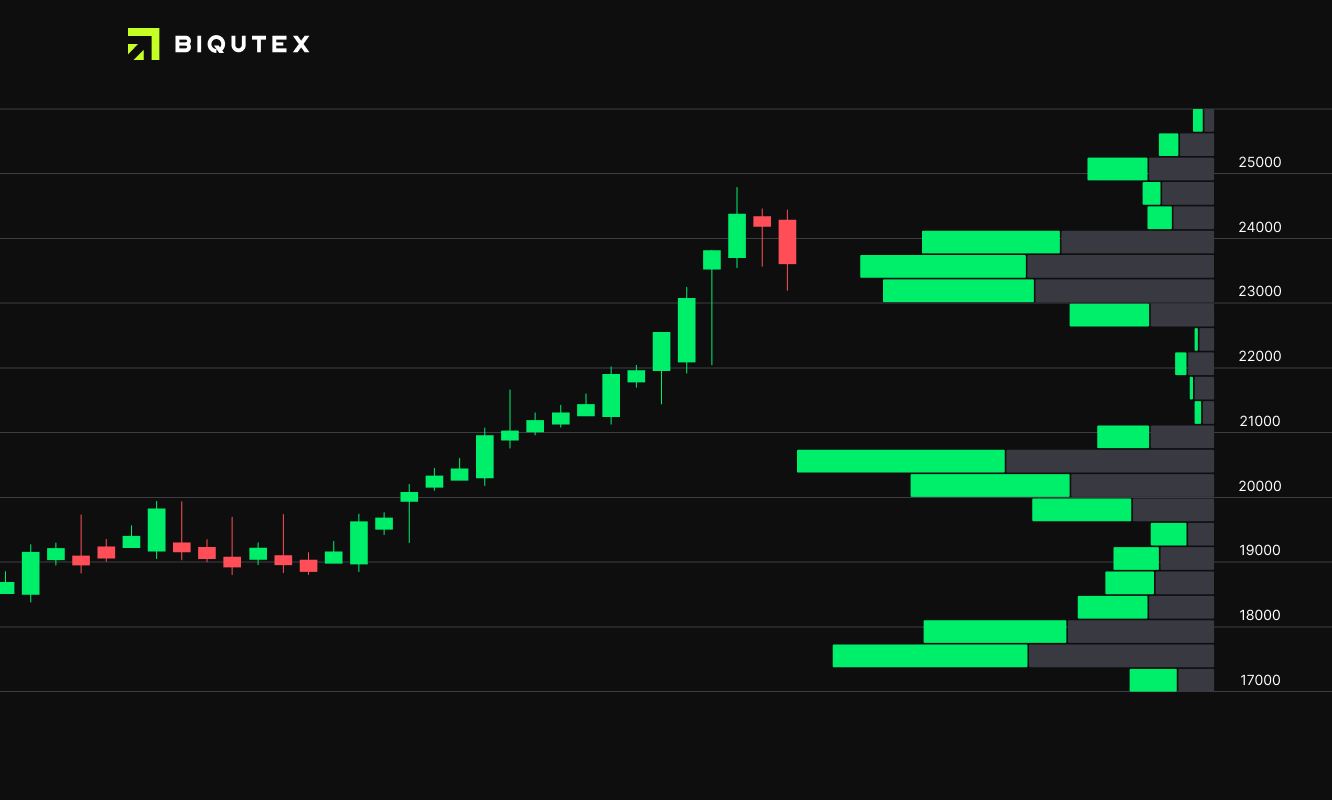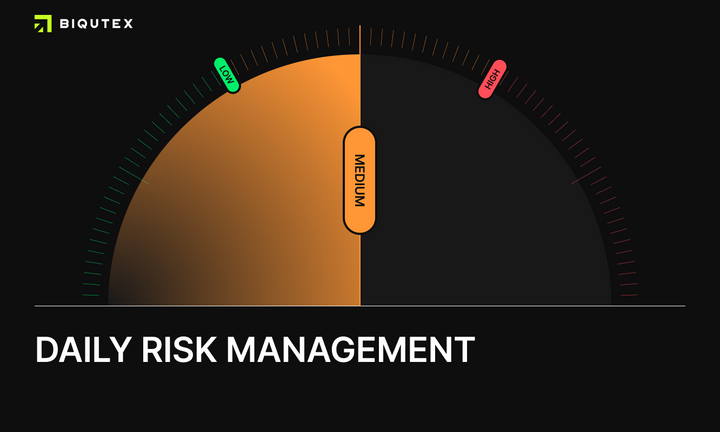USDC vs USDP: how do stablecoins work?
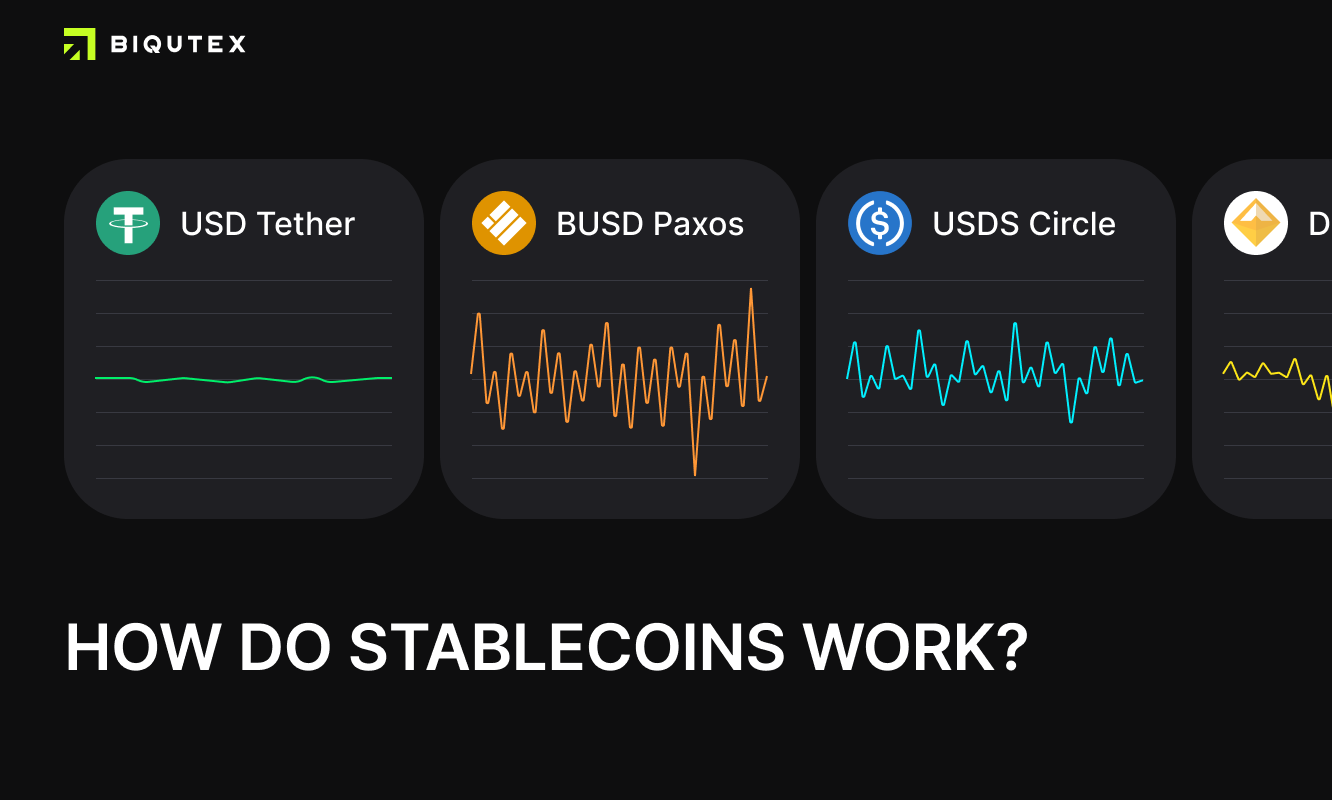
Cryptocurrencies, altcoins, stablecoins, and so many others that just confuses beginners. Today, we will be discussing stablecoins, understand how do stablecoins work, which stablecoin is safer, and finally what are stablecoins. Let’s get into it. What are Stablecoins?
Stablecoins are a type of cryptocurrency that is designed to have a relatively stable value, as opposed to other cryptocurrencies like Bitcoin or Ethereum that can be highly volatile. Stablecoins are tied to other assets that usually don't change in value much, such as regular money like US dollars, gold, or other cryptocurrencies. This is exactly why stablecoins are called “stable” due to their intention to maintain a steady value, avoiding significant price fluctuations. This stability makes stablecoins a potentially useful tool for various applications, such as payments, remittances, trading, and hedging against market volatility.
How can you actually use a stablecoin? Well, the same way you use other cryptocurrencies, such as for peer-to-peer transactions or as a store of value. However, because their value is tied to a stable asset, they can also be used to transfer value. For instance, when the sender wants to ensure that the recipient receives a consistent amount of value regardless of market conditions. Can you really consider stablecoins to be the most stable cryptocurrency? Let’s dive in more to discover!
What kind of Stablecoins are there
As traders and investors like diversity and options, different kinds of stablecoins were created and thought out. How different can actually stablecoin be as and were so many kinds actually created? Different types of stablecoins were created to meet different needs and to address different challenges. For example, some stablecoins were created to be more decentralized, while others were designed to provide greater transparency and security. Which are the best stablecoins types?Here are some common types of stablecoins:
- Fiat-collateralized stablecoins: These stablecoins are backed by reserves of traditional currencies like USD, EUR, or JPY held in a bank account. They are also called reserve stablecoin. One example of a reserve stablecoin is Tether (USDT) which is backed by the US dollar in a 1:1 ratio, meaning that for every USDT token issued, there is a corresponding US dollar held in reserve.
- Crypto-collateralized stablecoins: These stablecoins are backed by cryptocurrencies like Bitcoin or Ether held in a smart contract as collateral.
- Commodity-collateralized stablecoins: These stablecoins are backed by physical assets like gold or silver held in reserve. Stablecoins backed by gold might also be named as “crypto gold”. When hearing the term crypto gold, know that is a term used to describe a cryptocurrency that is backed by or tied to gold. The same is for the term “crypto dollar”.
- Non-collateralized stablecoins: These stabelcoins are not secured by anything other than an automatic mechanism that simply adjusts the amount of stabelcoins in circulation to control its value. Such stabelcoins are not popular and are generally not widely used.
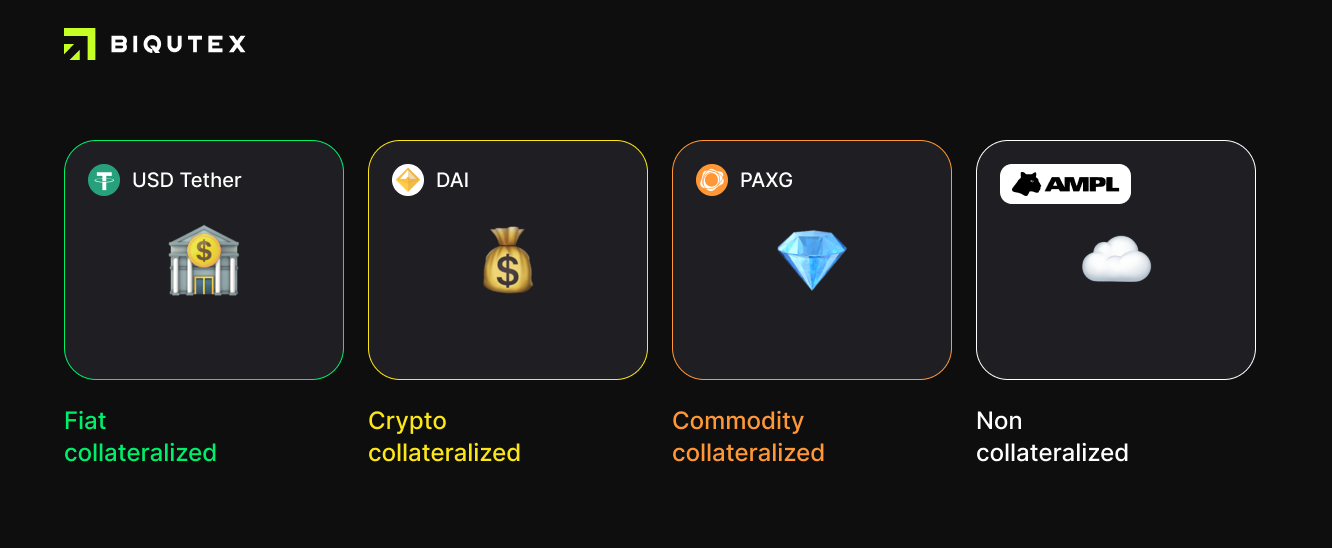
Where do Stablecoins come from?
Now that we covered “how do stablecoins work” and why is it called “most stable cryptocurrency”, let’s understand where do they come from. Stablecoins come from a variety of sources, including individuals, companies, and organizations. In most cases, stablecoins are created by private companies that specialize in developing blockchain technology and digital currencies. These companies may create stablecoins as a means of providing stability to cryptocurrency markets or as a way to facilitate international money transfers without the volatility associated with traditional cryptocurrencies like Bitcoin.
Centralized Stablecoins - What does this mean?
Let’s take the example of how Paxos issues stablecoins, shall we? What is Paxos in the first place. Paxos is a regulated financial institution that offers a range of services, including stablecoin issuance. It was founded in 2012 and is headquartered in New York City. Paxos is best known for its stablecoin, Paxos Standard (PAX), which is designed to maintain a 1:1 ratio with the US dollar.Paxos issues stablecoins, like their Paxos Standard (PAX) token, by following a process that involves four steps:
- Holding USD: Paxos holds a reserve of US dollars in a bank account.
- Tokenization: When a user wants to purchase PAX, they send USD to Paxos, and Paxos issues PAX tokens to the user's digital wallet.
- Redemption: When a user wants to redeem their PAX for USD, they send their PAX tokens back to Paxos, and Paxos sends the equivalent amount of USD to the user's bank account.
This process ensures that PAX tokens are backed by a reserve of USD and can be redeemed for USD at any time, making them a reliable and transparent stablecoin option. All top-stablecoins work in a similar way when they keep collateral in the form of dollars in their bank accounts.
Stablecoins can also be created by individuals or groups who seek to develop their own digital currencies for specific purposes or use cases. For example, a company might create a stablecoin as a way to pay their employees.
Top Stablecoins most stable stablecoins
So which are the best stablecoins and why are they considered to rule the top list? Firstly there are many factors such as:
1. Stability: The primary purpose of stablecoins is to maintain a stable value and the ones able to maintain a stable value is considered among the top ones. We will discuss the most stable stablecoins below.
2. Trustworthiness: This usually has to do with regulation, the reputation of the company issuing the stabelcoins, verification, and the availability of collateral.
3. Liquidity: Investors and traders want to be able to buy and sell stablecoins easily and the ones that are widely accepted by many exchanges and have high trading volumes are considered more liquid.
4. Security: This factor is important not only for stablecoins but every tradable asset. as Imagine you invest a big amount of money in an asset, you want to make sure it is highly secured from hacks and other risks.
The ones that have robust security measures top the list indeed.Here are some of the top stablecoins, along with a brief summary of each and why they are considered among the best stablecoins.
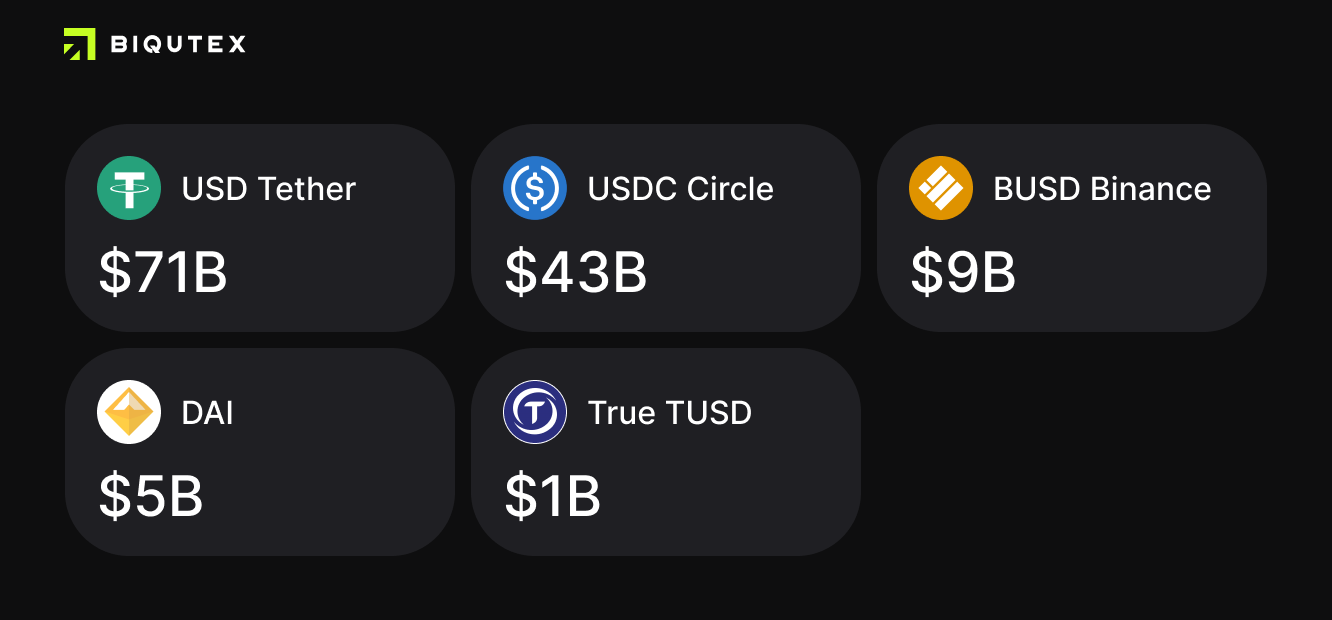
- Tether (USDT): USDT is tied to the US dollar, with each USDT representing one dollar 1:1 basis. It is issued by a Hong Kong-based company Tether. USDT was launched in 2014 with the purpose to to combine the unrestricted nature of cryptocurrencies which can be sent between users without a trusted third-party intermediary with the stable value of the US dollar. It is the most widely used stablecoin and is popular because it has a high market capitalization, is accepted by many exchanges, and has been around for a long time.
- USD Coin (USDC): yet again tied to the US dollar, with each USDC representing one dollar. The stablecoin was originally launched on a limited basis in September 2018. The stablecoin is issued by Circle Internet Financial Ltd. (Boston-based) and Coinbase. Circle is a fintech company that offers payment and treasury infrastructure for internet businesses, while Coinbase is a cryptocurrency exchange platform. Together, they created the Centre Consortium, which oversees the USDC stablecoin. It has gained popularity because it is highly transparent and audited which adds a high value to it.
- Binance USD (BUSD): Binance USD is a stablecoin that is also pegged to the US dollar, with each BUSD representing one dollar. BUSD is issued by Binance and Paxos. To ensure that there are enough US dollars to back all of the BUSD in circulation, Binance and Paxos have teamed up with some of the world’s largest banks.Together, they have established a reserve that is used to back all of the BUSD tokens in circulation. As a cryptocurrency custodian, Paxos is responsible for holding the USD reserves that are used to back the BUSD tokens. Binance, on the other hand, is responsible for managing the BUSD token. Stablecoin has a significant impact on transactions, payments, settlement, and decentralized finance (DeFi).
4. Dai (DAI): Dai is a stablecoin on the Ethereum blockchain pegged to the US dollar. Dai is a decentralized stablecoin meaning unlike centralized stablecoins, Dai is not backed by US dollars in a bank account. Instead, the provisioning on the Maker platform is used. The Maker platform, also known as MakerDAO, is a decentralized finance (DeFi) platform built on the Ethereum blockchain. It is a system for creating and managing stablecoins. But how does it work if it is not backed by any asset?The Maker platform uses a mechanism called a collateralized debt position (CDP) to create Dai. For example, users can deposit ether (ETH) as collateral into a CDP and then generate Dai stablecoin based on the value of their collateral. The Dai stablecoins can then be used for transactions on the Ethereum network. Dai was launched 2019 and has been gaining significant popularity.
In summary, these stablecoins are considered among the top as are also widely accepted by many exchanges and are seen as trustworthy due to their backing assets and regulatory oversight.
Be smarter, be better, study, read and grow with us!

Biqutex Exchange
Biqutex is an innovative crypto derivatives exchange. Trade an extended list of instruments (Perpetuals Swaps, Futures, Options, Calendar Spreads etc.) with up to 125x leverage and deep liquidity!

